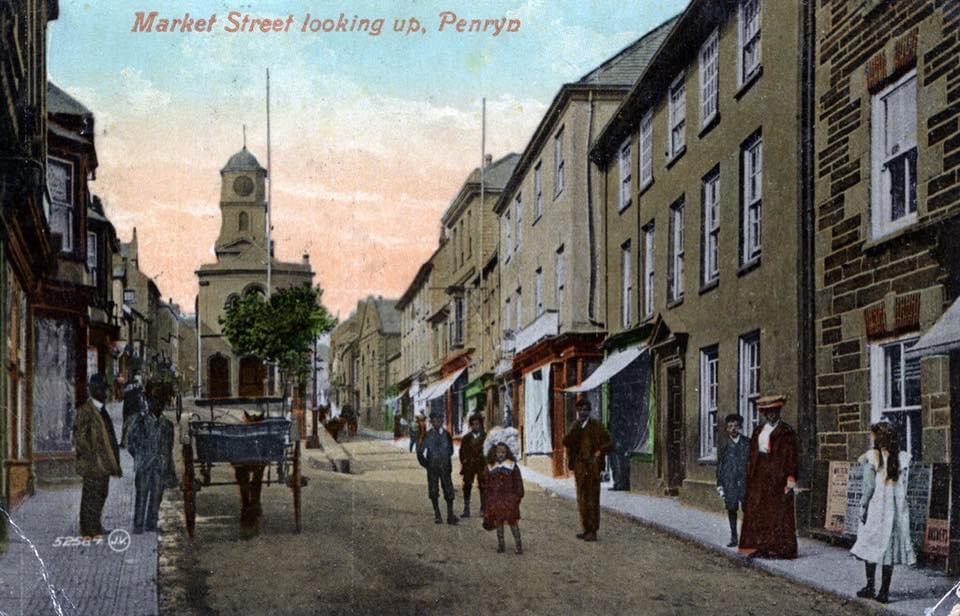
It is thought that the medieval church of St. Mary once occupied a site on ornear here until it was demolished in 1549.
Construction of the Market House began around 1570. Records show that St. Gluvias Church sold jewellery to raise funds to help with the construction, ultimately raising £20.
Peter Mundy (1539-1667) – a resident of Penryn, merchant trader, traveller and writer – described the building as ‘a handsome Market House, elevated about the middle of the towne’.
The windows and glass wall cases you see around the building correspond to the arcades of basket arches where stalls were set up and goods were sold.
A raised wooden walkway was built on Lower Market Street to allow access to stalls occupying that side of the market.
When you leave the museum, pause for a moment in Higher Market Street and look back at the building. The wooden shuttered arched openings can still be seen on the outer wall and, above the shutters you will see small openings covered with slate where the timbers of a protective pentice roof projected out into the street to shelter the market stalls.
The exact date that the original town clock and chimes were installed is not known, but a 1791 entry in the Universal British Directory for Penryn describes ‘an excellent town clock with chimes by Tompion.
Thomas Tompion was one of England’s foremost clockmakers, and the rare mechanism and granite weights are on display on the left at the rear of the museum.
The quality of the building and the fact that Penryn could afford to install such a prestigious clock is an indication of the wealth brought to the town by commerce.
In 1825 the Town Hall was added.
On the ground floor at the clock tower end of the building was the borough jail. It consisted of two rooms, which in 1834, were described as lacking adequate light or air, and as being unsuitable for human occupation. Security was also a problem, with locks frequently having to be replaced and prisoners recorded as being able to break out.
In 1839 the clock tower and what is now the museum office and the council chamber was added, with a reference being made in a newspaper dated 23 September of that year reading, ‘the old clock has been reinstated in the new clock tower’.
In 1909 the black faced clock was replaced with the illuminated dials seen today. The mechanism is now battery operated.
The opening of more and more shops in Penryn saw the decline of the market and in 1973, the building opened as a museum, with a major refurbishment undertaken in 1998.
Need any help?
If you have any questions about the museum’s collections, or need assistance during your visit, please ask a volunteer and we’ll do our best to help.
Want to know more about Penryn?
Our publication – ‘Penryn Heritage Trail: Meet the People Who Made Penryn’ – is available at a price of £1.00